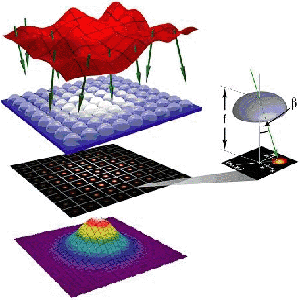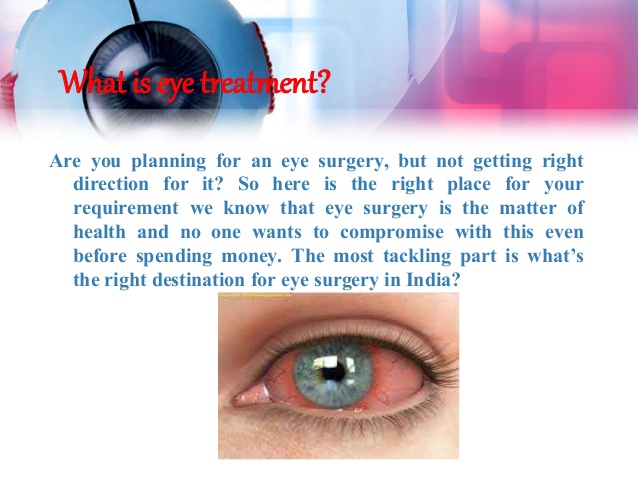Wavefront-guided LASIK is a promising new technology that provides an advanced method for measuring optical distortions in the eye. Measuring and treating these distortions goes beyond nearsighted, farsighted, and astigmatism determinations that have been used for centuries. As a result, physicians can now customize the LASIK procedure according to each individual patient’s unique vision correction needs. The treatment is unique to each eye, just as a fingerprint is unique. Wavefront systems work by measuring how light is distorted as it passes into the eye and then is reflected back. This creates an optical map of the eye, highlighting individual imperfections.
Wavefront technology functions as a roadmap for LASIK surgery, providing benefits to the patient during both the evaluation and treatment process.

– During the patient evaluation process, wavefront provides the physician comprehensive individual diagnostic information, not available using earlier technologies. Thus, before surgery even begins, the surgeon is better able to determine the appropriate course of treatment.
– During treatment, wavefront allows the surgeon to tailor the laser beam settings, making the surgical procedure itself more precise. In this way, wavefront technology offers the patients sharper, crisper, better quality vision, as well as a reduction in nighttime vision difficulties, such as halos and glare.
Wavefront technology is an adjunct tool used to enhance an already safe and effective procedure. As the most common form of vision correction surgery, LASIK has already benefited millions of patients. The increased safety and the improved quality of vision benefits of customized procedures are an important technological advancement for patients and physicians alike.
How Wavefront Works
The wavefront aberrometer Light can be thought of as traveling in a series of flat sheets, known as wavefronts. To clarify the confusion about light traveling as waves instead of rays, waves are just perpendicular to light rays. These light waves are wrinkled or distorted as they pass through imperfections in the eye. These errors can be displayed on a color map of the wavefront image, which is the tool that is used to diagnose, and then determine corrections, for abberrations in the eye.
There are several ways of analyzing the optical system of the eye using wavefront technology. The most common, the Hartmann-Shack wavefront sensing method, deals with light waves as they exit the eye. In this system, the surgeon or other professional shines a small, low-intensity laser into the eye, and the patient focuses on the light. As that light scatters off of the retina (the rear-most portion of the eye) it passes through the lens, the rear surface of the cornea (the clear, crystalline front part of the eye) and the front surface of the cornea. Thus, the emerging waves of light are distorted by the imperfections in the total visual system of the eye. After leaving the eye, the light passes through an array of many small lenses in the sensing device (called an aberrometer), and is focused into spots, which are recorded by a special camera. The deviation of the spots from their ideal location provides information about focusing imperfections in the visual system.
Visual Errors
For purposes of this discussion, there are two categories of visual errors or “aberrations:” second-order and higher-order.
Conventional forms of optical correction have been limited to measuring the best spherical and cylindrical visual errors (second-order aberrations), which result in myopia (shortsightedness) or hyperopia (farsightedness) and regular astigmatism (blurriness), and prescribing shperocylindrical lenses in the form of spectacles, contact lenses, and conventional refractive (LASIK) surgery to correct them. Correcting second-order aberrations has the highest impact on acuity, which is the eye’s ability to distinguish object details and shape. At the same time that conventional refractive surgery corrects major, second-order spherical errors, in many cases, it also induces some degree of minor spherical aberrations.
However, about 17 percent of optical errors are higher-order aberrations. If these are minimized, image contrast and special detail are increased. Minimizing higher-order aberrations with wavefront technology by reducing the naturally occurring ones is achievable and may be particularly beneficial to individuals with unusually large amounts of higher-order aberrations.
Wavefront-Guided Treatment in India
The goal of wavefront-guided laser treatment is to make corrections in the surface of the cornea that compensate for errors in the total visual system. Thus, the amount of wrinkle or error in the wavefront reflected from the back of the eye, as compared to the reference wavefront that was projected into it, defines the compensating optical correction. If the wavefront is retarded in relation to the reference wavefront, the laser must remove more tissue from the part of cornea related to that pattern. If the wavefront is advanced (in front of the referenced wavefront), the laser must remove less tissue. It should be noted that wavefront treatment does induce some minor second-order spherical errors, but to a significantly lesser extent than conventional refractive surgery.
In this way, a wavefront-guided treatment is customized to the characteristics of each eye and intended to minimize higher-order aberrations so that the greatest quality of vision can be achieved.
Wavefront technology is relatively new to the United States. The U.S. Food and Drug Administration (FDA) issued its first approval of a wavefront system in August 2002, and other major US laser manufacturers are expected to receive their approvals in 2003. As the FDA approves systems and they become widely available, patients will have greater access to wavefront technology and treatment.








